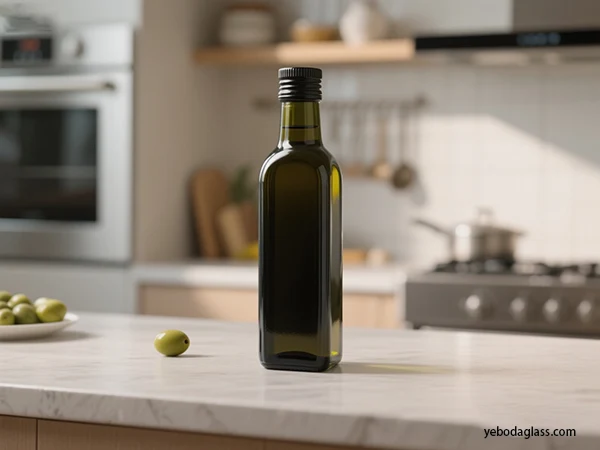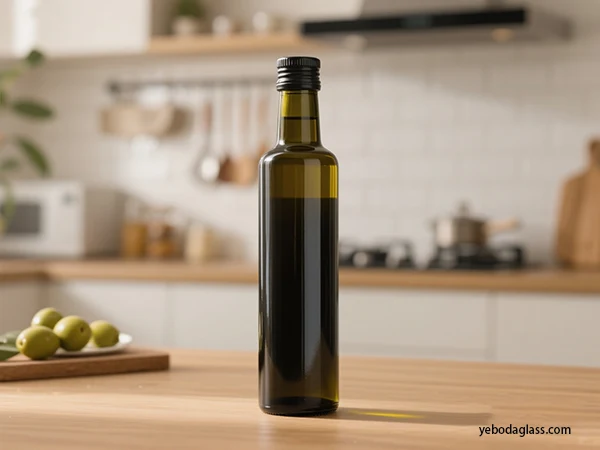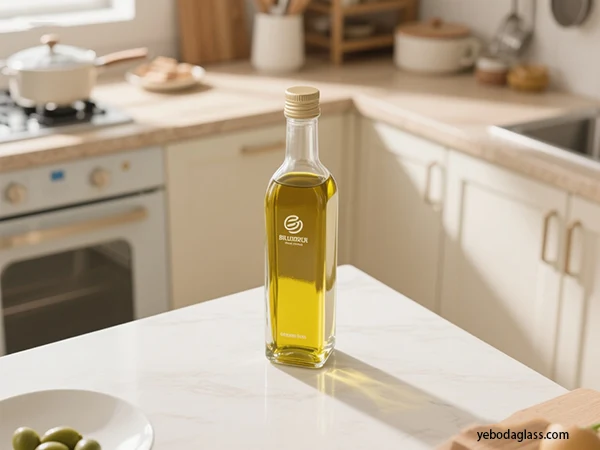介绍
This report provides an overview of sourcing factory-direct olive oil containers for distributors. The report looks at product categories, sourcing strategies, materials, customization options, logistics, prices, and risk mitigation. The objective is to help distributors make better informed decisions when considering buying olive oil containers directly from the manufacturer to achieve cost savings, quality, and promote an efficient supply chain. The main takeaway was that distributors need to understand the interaction between their materials to best preserve oil, understand the advantages to taking a factory direct sourcing option, and take control of quality assurance and negotiate effectively.

Olive Oil Container Product Landscape
The 橄榄油容器 market is very diverse with many options available to distributors including choices based on products lines, branding strategies options, and consumer behaviours. The primary considerations related to olive oil containers are the materials, size, and closure types of containers which may all help or hinder preservation, appearance, and functionality.
Material Options for Olive Oil Container
- 玻璃: This is the most traditional, and most sustainable and acceptable material for storing high-quality olive oils, especially Extra Virgin Olive Oil (EVOO). Glass is non-reactive with olive oils, meaning there is no chemical leaching and the flavor and aroma qualities are preserved. Glass has excellent barrier properties, performs well against passive and reactive oxygen, does not impart odors or flavors of its own, and is likely to produce true quality cell culture. On the downside, glass is fragile and subject to breakage. It can also provide some degree of light penetration, so normally colored glass is used to help shield olive oils from unwanted exposure. Changes in tint or color of the glass do not usually matter, with dark bottles being reasonably important to cover UV light to help avoid photo-oxidation of the oil, which degrades oil quality and nutritional quality of the oil. Clear glass could provide more consumer acceptance, but care should be taken to offer added protection such as UV-blocking coatings or cardboard cases. Glass or plastic vessels (drums) are used to pack bulk oils. In general, oil packed within glass has a shorter shelf life than can-packed oil.
- Tinplate (Metal Cans): Metal cans are great for olive oil. They provide the best and unique protection against light, humidity, and oxygen, so they are a good choice for longer term storage. They can be pretty strong and can be lithographed. The user can even provide a custom design. Available sizes of metal cans vary between small food service and retail formats, or large bulk containers. While usually safe, ensure to check if the tinplate is food-grade metal and the potential of corrosion occurring in some harsh conditions or from aggressive food products or oils the tinplate could come in contact with. Most importantly, it is not suggested to reuse tinplate cans of any purpose, and in re-filling cases of tinplate with olive oils.
- PET (Polyethylene Terephthalate): Plastic containers such as PET have advantages, including cheaper price and durability, when compared to glass. Without a doubt, there are limitations to PET as it doesn’t have great barrier properties; oxygen can permeate the PET plastic and drastically reduce the shelf life of the oil. Additives such as radical scavengers or oxygen barriers can be added to PET to better protect against oxygen, but often comes at an additional cost.
- Bag-in-Box (BIB): BIB is a growing trend for bulk olive oil distribution for very good reasons. BIB packaging consists of a flexible bag with a dispensing tap that is contained in a cardboard box. BIB packaging also provides an excellent barrier against air and light, preserving shelf life indefinitely or until the bag is opened. Because BIB packaging is flat on supply, storage and transport costs are greatly reduced. Catering Companies, Restaurants and the Foodservice industry are adopting this style of packing process for ease of use, and liquid dispensing without glugging or splashing. Typically BIB bags are made from BPA free PET plastic, making them 100% recyclable.
Common Sizes for Olive Oil Container
1-liter, 3-liter, 5-liter, 10-liter, 16-liter, 19-liter, and totes in various larger sizes (267-gallon for example),
- Closure Types for Olive Oil Container The closure type is important for product integrity and usability.
- Screw Caps: Standard screw caps are used very often and are usually plastic or aluminum. In regards to olive oil these caps frequently are supported by tamper evident caps, and or pourer inserts.
Pour Spouts:
Usually made from plastic, and are integrated into bottle designs, pour spouts can be used to manage dispensing, eliminate spills, and eliminate air discussions.
- Tamper Evident Seals: Tamper evident seals are an essential consumer and product safety device. They can be included in plastic caps and ROPP (Roll-On Pilfer Proof) aluminum closures. Some companies will use shrink sleeves on their bottles as additional tamper evidence.
- Dippers: Many closure types may include specific dipper designs to further manage the pouring and prevent leakage.
- Material Specifications, Sustainability, and Compliance Equally for home cooks and professional chefs, the exact measurement of spices is important for frequent flavor profiles. With a simple twist action to give the integrated dispensing mechanisms, such as specific spoon increments, can eliminate the requirement of different measuring spoons, reduce dislocation and prevent cross-pollution. Advanced systems can also avail AI to remove exact spice ratio based on pre-demogogram dishes.
- Authentication and Traceability Fake and adulteration in the spicy market are important concerns. NFC tags and QR code are embedded or printed on spice containers that can provide a safe link for the origin, processing details and certificates of a product. By integrating them with blockchain technology, raising transparency and consumer trusts, making a tampering-proof records of a trip from farm to table. Safe QR code and dynamic NFC tags are more difficult for fake, offer a strong solution against fraud.
Interactive Iabeling
Choosing the right material for olive oil containers is important in order to keep the quality of the oil, food safety, and sustainability.
Food-Grade Certifications and Barrier Properties for Olive Oil Container
- Food-Grade Compliance: All materials in contact with olive oil need to be certified food-grade just in case of chemical migration to surface and consumer safety concerns. This includes: glass, tinplate coatings, plastics, and printed inks.
- Light Barrier: Olive oil is highly prone to photo-oxidation, particularly from UV light. Dark glass (green, amber, black) is critical to block UV light. Tinplate and some coated paperboard generally provide good light barrier properties. Clear glass provides minimal light protection and requiring additional shielding.
- Oxygen barrier: Once oxygen ingress occurs, oxidation begins and the flavor, aroma and nutrition value of the olive oil is degraded. Glass and tinplate provide excellent oxygen barriers. PET without enhancement has limited oxygen barrier properties but enhancement could improve barrier properties. Bag-in-box systems are specifically designed to minimize oxygen ingress with an airtight inner bag and dispensing from the inner bag, limiting headspace in the container, and ensuring olive oil residents only in the inner bag until dispensing.
- 耐久性: Materials must be resilient through various management, transport, and storage conditions, with enduring damage. Glass is a fragile material, with tinplate and PET being potentially more durable. BIB packaging does have a cardboard outer wrap that can take a fair amount of abuse, with a flexible inner bag.

Sustainability Aspects of Olive Oil Container
- 轻量化: Lighter-weight materials or deep design innovation can lessen material used and emissions from transportation.
- Minimal Packaging: The main sustainability strategy is to reduce total packaging material use.
- Reusable packaging: In particular, the concept of the reusable glass container and all cleaning/refilling solutions (although less common for direct-from-factory wholesale) contributes to waste reduction.
Key Certs You Kinda Need for Olive Oil Containers
- Alright, here’s the drill: ISO 9001: Basically, this means the company isn’t just flying by the seat of its pants when it comes to quality. If you don’t see this, start raising your eyebrow.
- BRC (British Retail Consortium): Just your standard “we actually make stuff safely” badge, global edition. Tells you—almost screaming at you—that they’ve got food safety and quality at least somewhat together.
- FDA: Selling or importing into the U.S.? Gotta play by FDA’s rules for food contact. No exceptions. Well, except for people who enjoy legal trouble.
- SGS, CE: You’ll spot these around—think of them as the generic “yeah, we followed the rules” stickers for safety and quality. Not flashy, just necessary.
- FSC & SFI: Now, if you’re rocking paperboard for Bag-in-Box (BIB) packaging, you’ll want to see these. Means your packaging wasn’t made at the expense of some poor rainforest. Responsible forestry and all that good stuff.
TLDR: If you’re missing any of these, time to double-check what—or who—you’re dealing with.
Customization vs. Standardized Solutions
Distributors need to choose between standard off-the-shelf olive oil containers or custom-designed options. Each option has its own merits and shortcomings.
Standardized Olive Oil Container Options
好处:
- Lower cost: Standard containers mass produced will typically have lower unit costs based on economies of scale.
- Less lead-time: Generally higher availability translates to shorter lead-times.
- Less MOQ: Often associated with lower Minimum Order Quantities making them accessible to smaller distributors or as trial runs.
- Proven design: They have been tested for function and consumer acceptability.
Drawbacks:
- fewer branding options: There is a lower degree of unique brand differentiation.
- More available to competitors: Competitors can easily purchase the same packaging
Custom-Designed Olive Oil Container Solutions
优势:
- Distinctive Brand Identity: Custom design allows for unique bottle shapes, colors, and finishes to be created, differentiating your product into the desired positioning and premium image.
- Added Functionality: Bespoke designs can incorporate functionality for improved pouring, dispensing, or preservation.
- 知识产权保护: Custom design can provide a level of exclusivity.
缺点:
- Increased Cost: Custom run tooling, design, and lower production volumes will generally provide a higher unit price.
- Longer Lead Times: Cost, design, prototyping, tooling and production setup time frames can substantially delay delivery schedules.
- Increased MOQs: Custom designed tooling and production runs usually require a higher volume of orders.
- Cost in Design and Development: Cost associated with design expertise and possibly prototyping.
Customization Options for Olive Oil Container
Manufacturers provide a variety of customization options for standard and custom containers:
- Bottle Design and Shape: Standard bottles can be round, square, or custom proprietary shapes.
- 瓶身颜色: Most cans/containers are made from clear, green, or amber glass. Colors can be specified during the manufacturing process such as matte black or custom colors.
- Bottle Surface Decoration: Surface decoration such as: silkscreen printing, labelling, hot stamping, frosting, spray painting, etching, engraving, and many more options are available for branding and aesthetics.
- Lids and Closures: Any type of lid can be applied to bottle. There are endless options for colors and type of closure. Lids can also be designed for tamper evidence.

Mockup Resources for Olive Oil Container
Mockups are a great resource for distributors and designers looking for custom bottle designs. Many websites like UnicDesign, Creatsy, and Etsy offer mockup templates in Photoshop (PSD) files that allow you to see a realistic image of your label designs on various bottle types including olive oil bottles. Mockups allow for a large range of customization of the bottle elements, shadows, and backgrounds which is helpful in presenting design concepts to clients and to add new projects to your portfolio.
Future Trends and Innovations in Olive Oil Packaging
Man, the packaging game? It’s gotten wild lately—especially with everyone yelling about eco-friendliness, not wrecking the planet, and, you know, actually making stuff work for humans. Distributors really need to keep their heads on a swivel if they wanna stay ahead.
Next-Level Sustainable Stuff for Olive Oil Containers
We’re way past just shoving everything in some half-arsed recycled plastic. People are cooking up containers made from plants, mushrooms, even friggin’ seaweed now! Stuff that legit breaks down instead of haunting landfills for centuries. Compost it, bury it, feel a little less guilty about loving olive oil.
Smart Packaging—’Cause Even Your Olive Oil Can Be a Nerd
Packaging is getting brains, whether you asked for it or not. We’re talking packaging that snitches on itself.
- Shelf-Life Indicators: Imagine the bottle telling you, “Hey, I’m about to turn rancid, bud”—like, actual color changes, not just those sketchy expiration dates you ignore. There’s this new thing with cellulose nanofibers, methylene blue, and vitamin C—sounds like something from a lab, but it’s in your kitchen.
- Traceability Tech: QR codes, NFC chips, RFID tags, and that whole blockchain jazz. Swipe your phone and boom—proof your olive oil is legit and didn’t get swapped by some shady dealer. Italians, apparently, will fork over extra cash for these receipts. Honestly, can you blame them?
- TTIs (Time-Temperature Indicators): Fancy little gadgets log how hot (or not) the bottle’s gotten during shipping. Olive oil’s finicky—if it gets too toasty, it’s toast. These things help keep the good stuff good.
Fancy New Ways to Pour Olive Oil
Why settle for leaky, messy bottles? People keep inventing spouts and dispensers that give you the perfect drizzle, keep air out, and save you from that sad “oops, too much” moment over your salad. Bonus: less air in the bottle, so your oil lasts longer.

Less is More—Lightweight & Low-Waste Olive Oil Packaging
Everybody’s cutting down on wasted material. Lighter bottles, smaller lids, thinner walls—but not at the expense of your countertop (or your shirt) surviving the experience. Sure, it saves cash, but yeah, the environment’s happy too.
Bulletproofing Olive Oil—Barrier Tech
No one wants light or oxygen turning their fancy olive oil into some chemical swamp. Cue the science wizards: they’re making better shields for bottles and jars so your oil stays fresh, not funky. Plastics, glass, weird new coatings—if it keeps out the bad stuff, they’re on it.
Going Full Circle—Closed-Loop Olive Oil Packaging
Recyclable, reusable, maybe even refilling stations one day? Brands are shooting for packaging that doesn’t just end up in the bin. Closed-loop systems are all the rage, so your empties might get more lives than your iPhone gets updates. Bottom line? Distributors gotta catch these waves, or get stuck watching from the beach. The olive oil packaging world’s not just keeping up—it’s sprinting, and you wanna be out front, not eating its dust.




